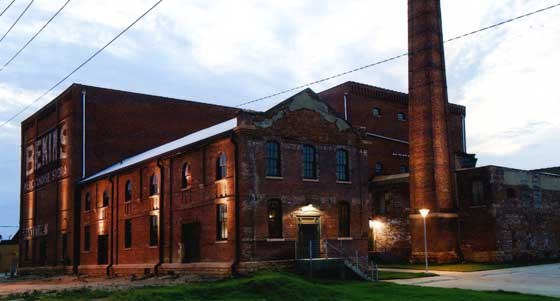Last updated: March 7, 2023
Article
Case Study: Linseed Oil Works, Iowa


Below: The loading dock along one elevation of the building was retained and modified with a simple guardrail.
The conversion of the Linseed Oil Works for a variety of commercial tenants created open, unstructured meeting spaces and offices with low, half-wall partitions separating them that allow the entirety of the space to be seen. The original interior finishes have been retained throughout and, where they existed, wood floors were patched and repaired as necessary. Historic stairs were retained where possible and a new, simply-designed, contemporary, yet compatible, staircase was added to meet code requirements. This rehabilitation project, completed at a cost of over $ 5 million, successfully preserved the historic industrial character of the Linseed Oil Works.
